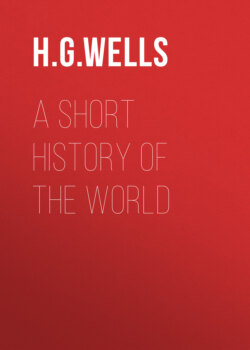Читать книгу A Short History of the World - H. G. Wells - Страница 11
На сайте Литреса книга снята с продажи.
A DARK NEBULA Taken in 1920 with the aid of the largest telescope in the world. One of the first photographs taken by the Mount Wilson telescope. There are dark nebulæ and bright nebulæ. Prof. Henry Norris Russell, against the British theory, holds that the dark nebulæ preceded the bright nebulæ. Photo: Prof. Hale
ОглавлениеSlowly by degrees as one million of years followed another, this fiery scene would lose its eruptive incandescence. The vapours in the sky would rain down and become less dense overhead; great slaggy cakes of solidifying rock would appear upon the surface of the molten sea, and sink under it, to be replaced by other floating masses. The sun and moon growing now each more distant and each smaller, would rush with diminishing swiftness across the heavens. The moon now, because of its smaller size, would be already cooled far below incandescence, and would be alternately obstructing and reflecting the sunlight in a series of eclipses and full moons.
